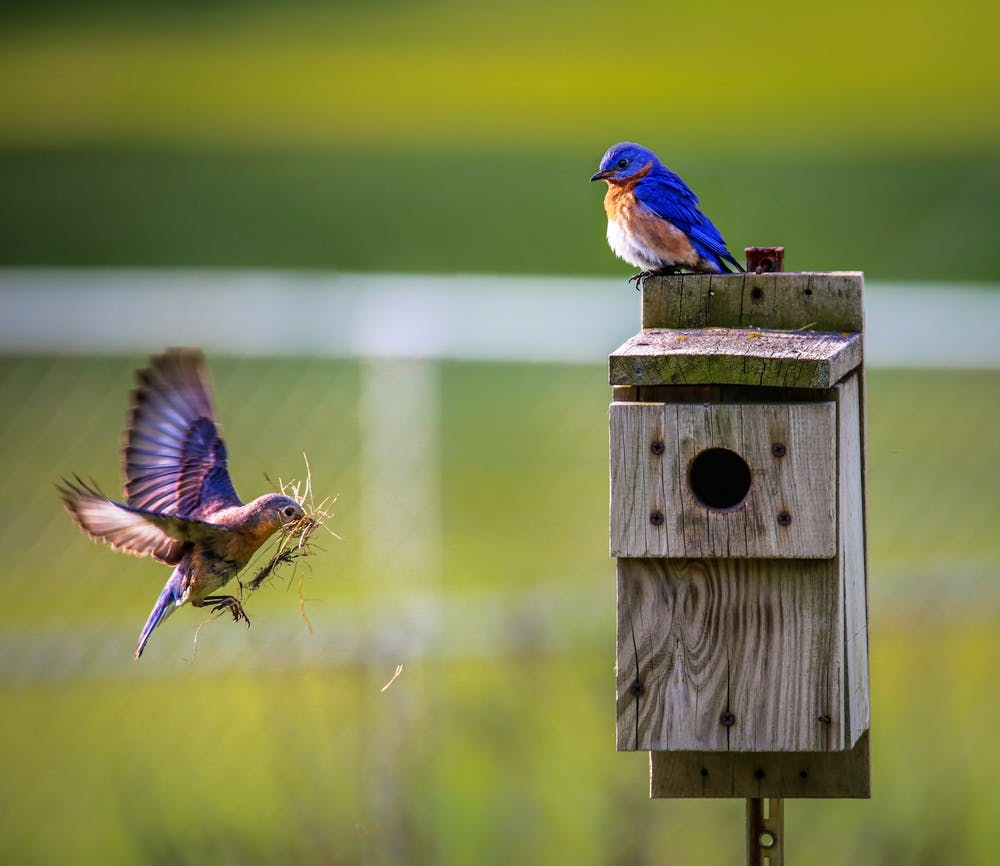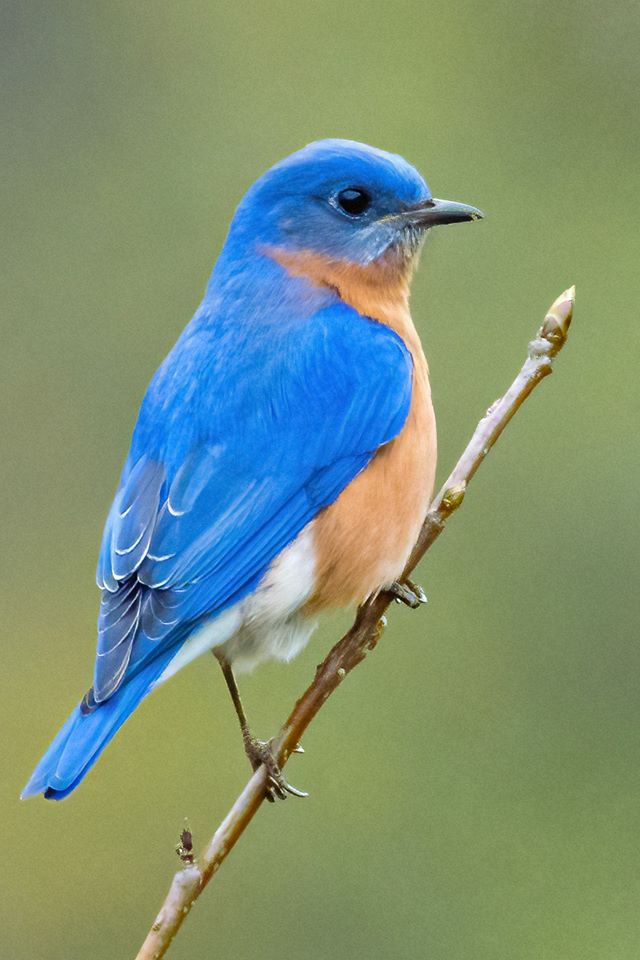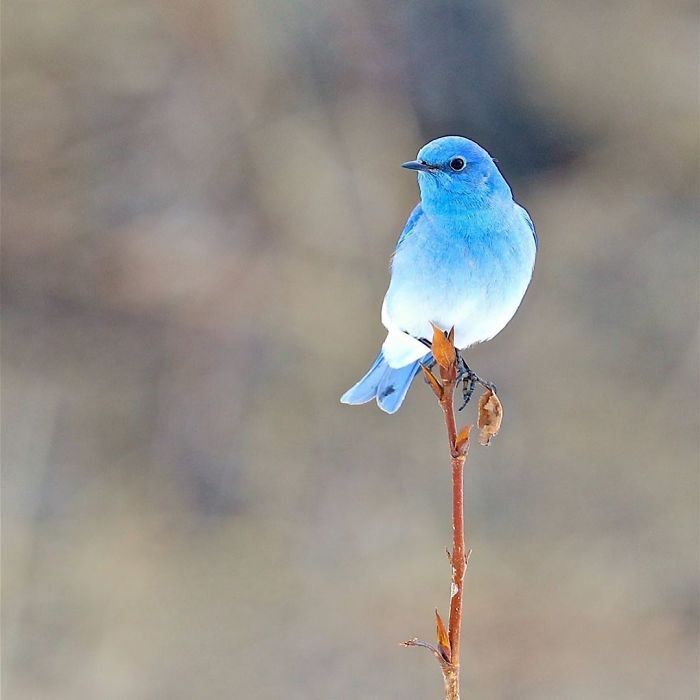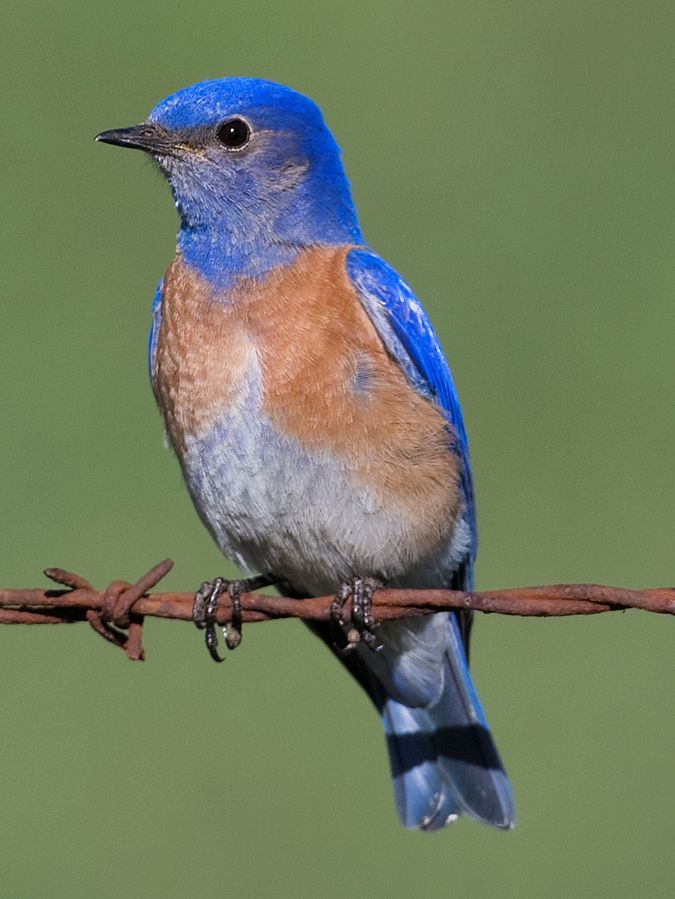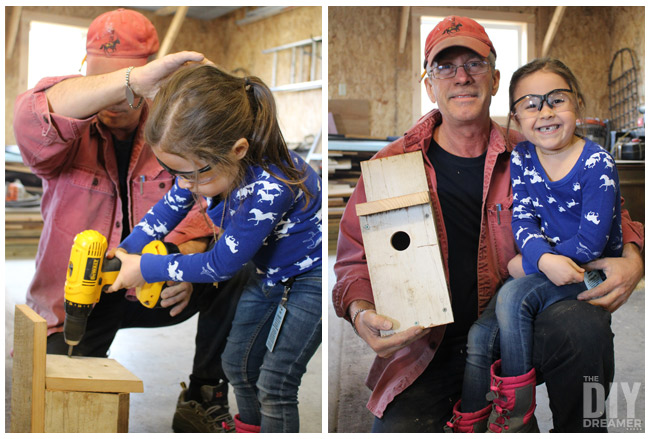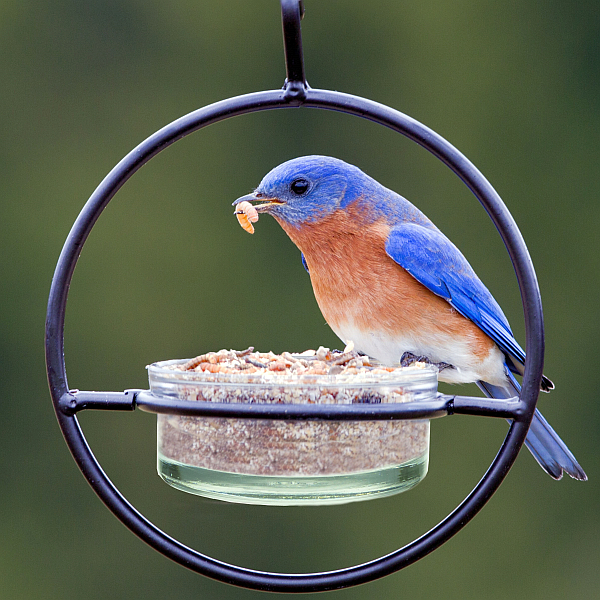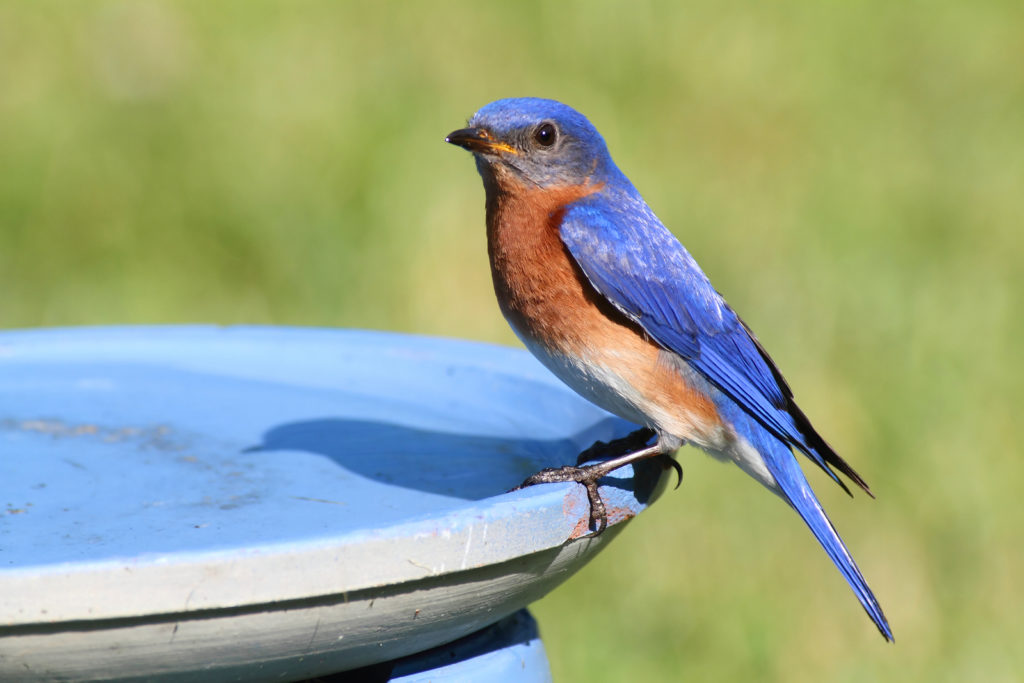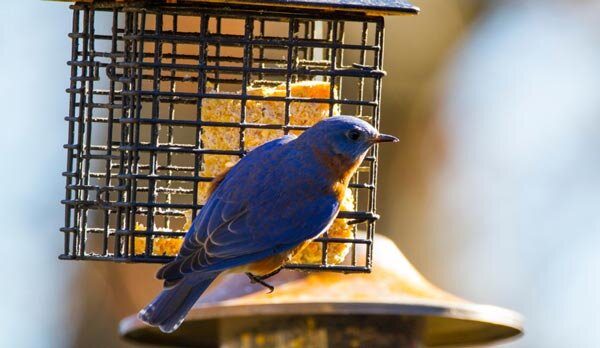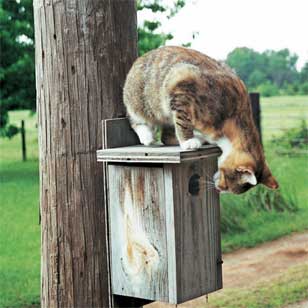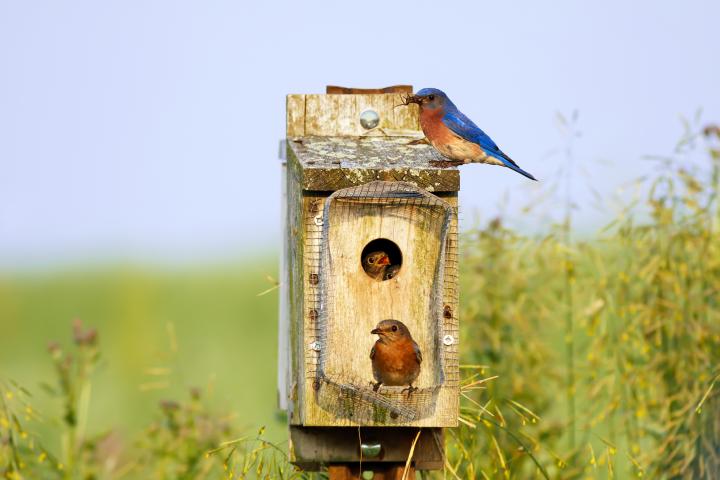by DJ Featherton
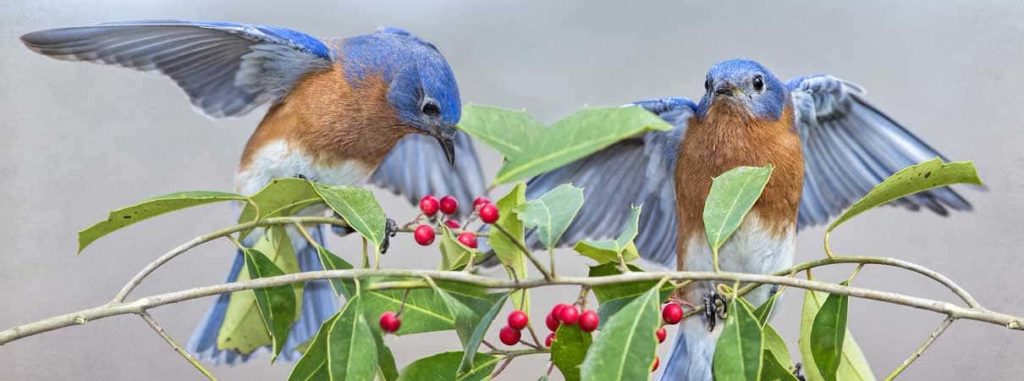
Do we have bluebirds around here? I thought I saw one the other day. And, how would we get them to come to our yard and feeders? I’m asked this all the time. Although it takes some patience, yes, we can welcome the handsome and well-cherished bluebird to our backyard.
First off, there are eastern, mountain and western bluebirds. The eastern species is common from the Atlantic shores to the western mountains, and from the Canadian border to the southern gulf states. Even in the New England and Great Lakes areas, bluebirds will stay the winter, but may leave their nests and gather in flocks for a change in habitat that provides winter foods and roosting opportunities. Bluebirds are cavity nesters and will make home in abandoned woodpecker holes or other natural cavities in the trees. Years back, the bluebird population dropped considerably due to human development causing loss of natural habitat. Interestingly, and thankfully, building bluebird boxes became a popular hobby and actually helped to bring the bluebird numbers back to standard. Today, it’s not unusual to see a flock of bluebirds on fences and wires bordering open grassy areas that provide a bug and insect rich feeding environment. It’s also not uncommon to see DIY bluebird houses on fence posts as we drive through the countryside. So, how do we get these open-field beauties to our backyard feeders? It starts with a bluebird box or two.
A bluebird box is not complicated, but is specific. These guys are very picky and absolute about where they will live and nest. Here are the rules. Bluebird houses must be a minimum of three hundred feet apart from each other. Some experts say even a bit more. This gives each nesting pair their own territory. Most important is to make sure the entry hole is exactly 1.5 inches in diameter (1.65 inches for western bluebirds). A predator guard in front of the entry gives added protection from common and frequent predators like house sparrows or even house wrens. Entrance height should be 6-10 inches above the house floor, and the house floor must be 5×5 inches to accommodate broods of five to eight chicks. Make sure there is a removable opening in case you must evict a pesky house sparrow. They can be ruthless, and will puncture eggs, kill blue bird chicks, and even take over their nests! Building bluebird boxes can be enjoyable if you’re handy with woodworking. For me, shopping online is fun and the products are great. I’ll order them up and find them at my door in the next day or two. Bluebirds prefer lower perches and living quarters, so fence post height is just fine. Further, place the box by the edge of a large open area with the entrance facing east, or facing whichever part of your yard gets the most sun. This is step one.
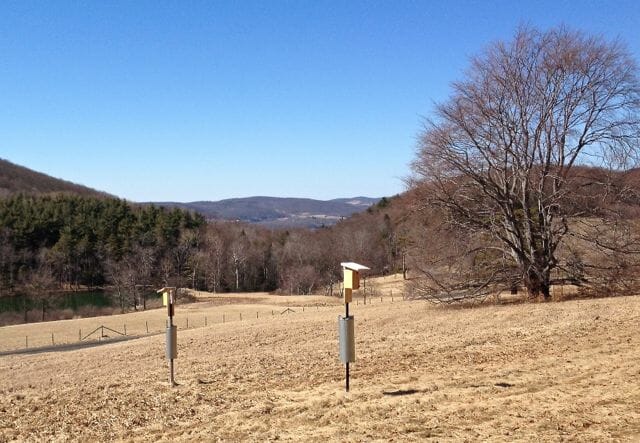
Step two is to ready your yard with moving water which always attracts birds. I have several decorative birdbaths with solar bubbler fountains that are easy to maintain and attract a lot of birds. Most platform feeders work well, and so do many others. Live mealworms are clearly their meal of choice, but dried mealworms, suet, fruit, and sunflower bits will be well-consumed. If the feeder is active, some birders get the bluebirds to eat right from their hand! Obviously, go native with some local trees and berry bushes that naturally attract these birds.
Step three involves patience and property management. The blue birds must find the bird boxes, and then find your feeders. As property manager it’s your job to check the boxes for intruders. House sparrows are not native and must be evicted immediately for your bluebirds to prosper. Just as importantly, keep a lookout for cats! Cats remain the number one threat to all birds worldwide. If your yard is tiny and far from open grassy areas, you may have poor luck. The bluebirds, however, are there. If you try, they will come.
So, build those houses (or buy them), put them up, then grab your birding binocs, and welcome to the club. You are now a bona fide backyard “bluebirder”! I’ll see ya out there!
